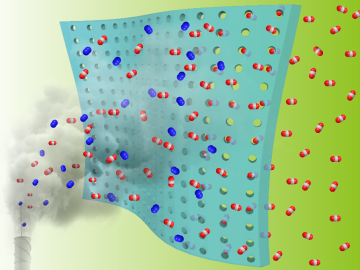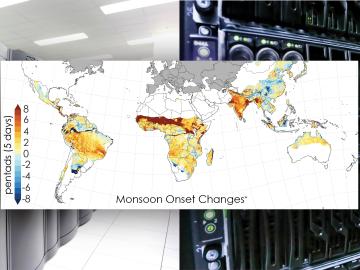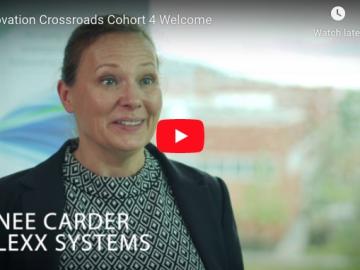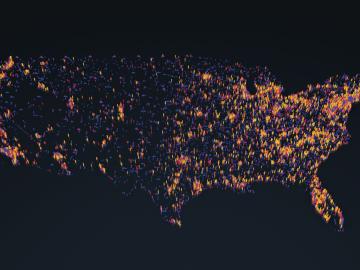
Filter News
Area of Research
- Biology and Environment (24)
- Computational Engineering (1)
- Computer Science (2)
- Electricity and Smart Grid (1)
- Energy Science (46)
- Functional Materials for Energy (2)
- Fusion and Fission (1)
- Isotopes (7)
- Materials (31)
- Materials for Computing (3)
- National Security (3)
- Neutron Science (10)
- Nuclear Science and Technology (3)
- Supercomputing (25)
News Type
News Topics
- (-) Biomedical (21)
- (-) Clean Water (2)
- (-) Energy Storage (48)
- (-) Environment (51)
- (-) Exascale Computing (23)
- (-) Isotopes (24)
- 3-D Printing/Advanced Manufacturing (59)
- Advanced Reactors (14)
- Artificial Intelligence (46)
- Big Data (17)
- Bioenergy (29)
- Biology (30)
- Biotechnology (12)
- Buildings (22)
- Chemical Sciences (44)
- Composites (14)
- Computer Science (79)
- Coronavirus (17)
- Critical Materials (11)
- Cybersecurity (18)
- Education (3)
- Element Discovery (1)
- Emergency (1)
- Fossil Energy (1)
- Frontier (24)
- Fusion (19)
- Grid (21)
- High-Performance Computing (46)
- Irradiation (1)
- ITER (3)
- Machine Learning (17)
- Materials (71)
- Materials Science (60)
- Mercury (2)
- Microelectronics (1)
- Microscopy (20)
- Molten Salt (3)
- Nanotechnology (32)
- National Security (23)
- Neutron Science (61)
- Nuclear Energy (36)
- Partnerships (34)
- Physics (27)
- Polymers (14)
- Quantum Computing (16)
- Quantum Science (35)
- Security (12)
- Simulation (15)
- Software (1)
- Space Exploration (3)
- Statistics (1)
- Summit (24)
- Transportation (37)
Media Contacts

Scientists at ORNL used neutron scattering and supercomputing to better understand how an organic solvent and water work together to break down plant biomass, creating a pathway to significantly improve the production of renewable

Researchers at the Department of Energy’s Oak Ridge National Laboratory and the University of Tennessee, Knoxville, are advancing gas membrane materials to expand practical technology options for reducing industrial carbon emissions.

Scientists from the Department of Energy’s Oak Ridge National Laboratory and a dozen other international research institutions have produced the most elaborate set of projections to date that illustrates possible futures for major monsoon regions.

A team of researchers has performed the first room-temperature X-ray measurements on the SARS-CoV-2 main protease — the enzyme that enables the virus to reproduce.

The Department of Energy’s Office of Science has selected three Oak Ridge National Laboratory scientists for Early Career Research Program awards.

Bruce Wilson, a group leader in the Environmental Sciences Division at the Department of Energy’s Oak Ridge National Laboratory, has been elevated to the grade of senior member of the Association for Computing Machinery

Giri Prakash, data informatics scientist and director of the Department of Energy’s Atmospheric Radiation Measurement Data Center at Oak Ridge National Laboratory, has accepted an invitation from the National Academies of Sciences, Engineering, and Medicine to serve a four-year term on the U.S. National Committee for CODATA.

ORNL welcomed six technology innovators to join the fourth cohort of Innovation Crossroads, the Southeast’s only entrepreneurial research and development program based at a U.S. Department of Energy national laboratory.

OAK RIDGE, Tenn., May 5, 2020 — By 2050, the United States will likely be exposed to a larger number of extreme climate events, including more frequent heat waves, longer droughts and more intense floods, which can lead to greater risks for human health, ecosystem stability and regional economies.

Suman Debnath, a researcher at ORNL, has been elevated to the grade of senior member of the Institute of Electrical and Electronics Engineers (IEEE).


